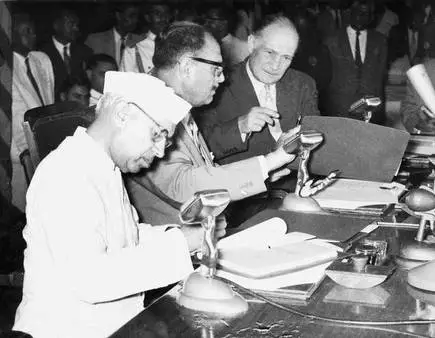Pakistan is an agricultural country. Eighty percent of its agricultural output comes from the Indus Basin. Pakistan has one of the world’s largest canal systems built much before Independence by the British. After Independence, problems between the two countries arose over the distribution of water. Rivers flow into Pakistan territory from across India. In 1947, when Punjab was divided between the two countries, many of the canal head-works remained with India. The division of Punjab thus created major problems for irrigation in Pakistan.
On April 1, 1948, India stopped the supply of water to Pakistan from every canal flowing from India to Pakistan. Pakistan protested and India finally agreed on an interim agreement on May 4, 1948. This agreement was not a permanent solution; therefore, Pakistan approached the World Bank in 1952 to help settle the problem permanently. Negotiations were carried out between the two countries through the offices of the World Bank. It was finally in Ayub Khan’s regime that an agreement was signed between India and Pakistan in September 1960. This agreement is known as the Indus Water Treaty.
This treaty divided the use of rivers and canals between the two countries. Pakistan obtained exclusive rights for the three western rivers, namely Indus, Jehlum and Chenab. And India retained rights to the three eastern rivers, namely Ravi, Beas and Sutluj. The treaty also guaranteed ten years of uninterrupted water supply. During this period Pakistan was to build huge dams, financed partly by long-term World Bank loans and compensation money from India. Three multipurpose dams, Warsak, Mangla and Tarbela were built. A system of eight link canals was also built, and the remodeling of existing canals was carried out. Five barrages and a gated siphon were also constructed under this treaty.
This article was last updated on Sunday, June 01, 2003






